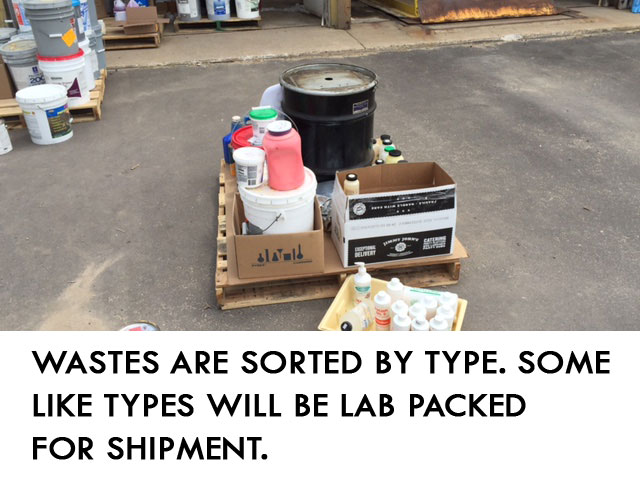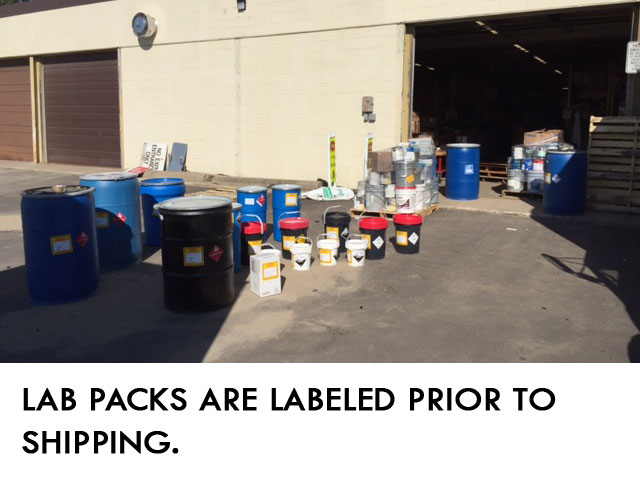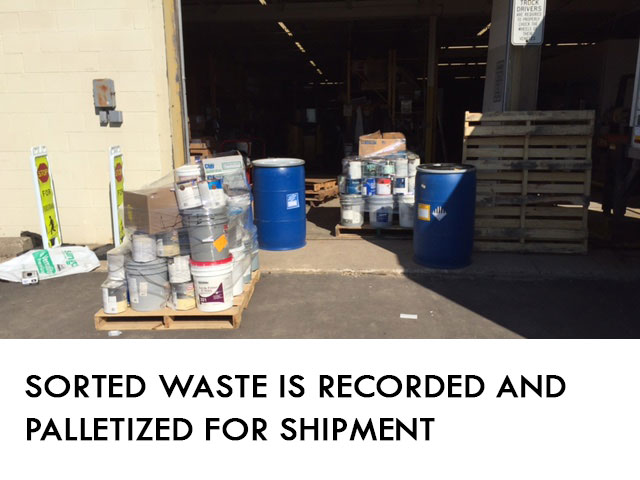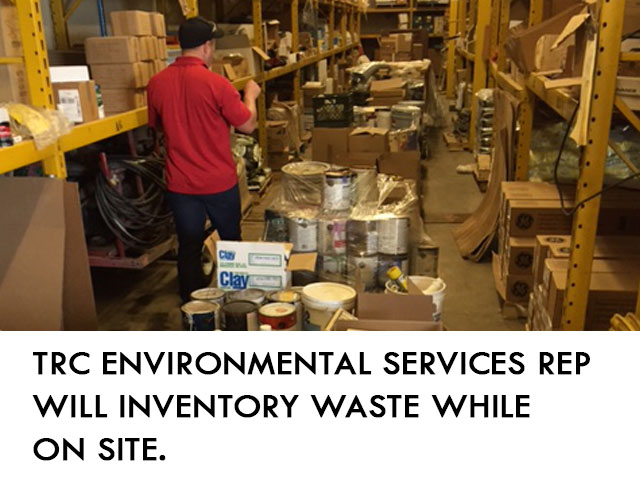How Does Hazardous Waste Clean Up Work?
Published September 2016
Do you have a room, closet, or cabinet used for chemical storage? Maybe your business has a few old cans of paint, or an entire warehouse aisle of miscellaneous products that sit half-unused year after year, and you’re not really sure how to start getting it all cleaned up safely and responsibly?
Keep reading to learn about the TRC process for managing hazardous waste cleanups for our clients, with attention to details, and in compliance with DOT and EPA regulations.
We start in one of two manners, either the client provides a waste inventory, or TRC comes on site to organize waste and create the inventory. Here’s how each option works:
CLIENT CREATED INVENTORY
Client sorts and inventories their waste, and then provides TRC with that inventory along with SDS sheets for all wastes. The Environmental team likes to have pictures, so they know how much and what types of packaging to prepare for, and to get a clear idea of what is on site. TRC will often ask for that from the customer. TRC is then able to create a recycling and disposal estimate based on that inventory. The actual invoice will be based on the actual waste found on-site, plus time and packaging material needed to prepare the waste according to DOT and EPA compliance. This is certainly not a solution for everyone, and we do provide a simple hazardous waste inventory guide to help clients, but many people choose to have TRC take care of their chemical waste clean up from the start.
TRC CREATED INVENTORY
If your hazardous waste clean up project is large or complicated, or if your company doesn’t have in-house environmental safety expertise, having TRC work on your chemical waste clean up from the start is a helpful solution. This is a tremendous benefit when internal resources or knowledge are not available to you. Clients simply contact TRC and schedule a time for the TRC Environmental Services team to come on-site. Under a T&M agreement, our professional team will:
- sort your waste
- organize wate by type
- complete an inventory of your waste
- package the waste in approved transport containers
- prepare the required paperwork for shipment
Finally, TRC loads the waste onto our truck and hauls it off site to be processed and/or recycled. Our fees for this service include mileage charged to get the team on-site, an hourly labor rate for staff, and cost for packaging used needed, along with the disposal fees. One job, one invoice. We asked one of our recent clients about his experience using this exact service. He recommends, “Hire someone like TRC to handle it from start to finish. It was a big process, and your guys made it so much easier. It takes a lot of pressure off of you by having a qualified company handle it in a proper way.“

At this point you have chosen to either create a waste inventory on your own or hire TRC to complete one, and your project will be handed from the account representative over to our environmental services team, the people trained to safely handle and mange hazardous wastes.

Our team arrives on site at the scheduled time and begin to categorize all of the waste by DOT hazard classes and chemical compatibility. Each category is then inventoried before being packaged into UN-rated drums. The void space in the drums is filled with a loose packing media to prevent items from shifting during transit and to soak up any liquids that may spill. Each drum is assigned EPA waste codes and a shipping description from the DOT Hazardous Materials Table. All items are shipped either on a hazardous materials bill of lading or a Uniform Hazardous Waste Manifest. The on-site team prepares all of the shipping documents, labels, markings, and profiles required to legally transport your waste for disposal and/or recycling. The profile forms describe the waste to the disposal facility to ensure that an appropriate treatment plan is utilized. Clients receive copies of all shipping documents for their records.

Once the waste is shipped from the client’s site is it brought back to TRC’s licenses, 10-day transfer facility in Little Canada, MN. From there it is placed onto a semi-trailer with waste from other generators (clients) and shipped to the disposal facility for final processing. Upon receipt of the waste, the disposal facility signs the shipping documents and sends a copy of the now completed shipping document back to the original generator (that’s you!) to help them maintain compliance.
You can read more about hazardous waste recycling and Envrionmental Services with TRC, or consult our team now with your questions!
